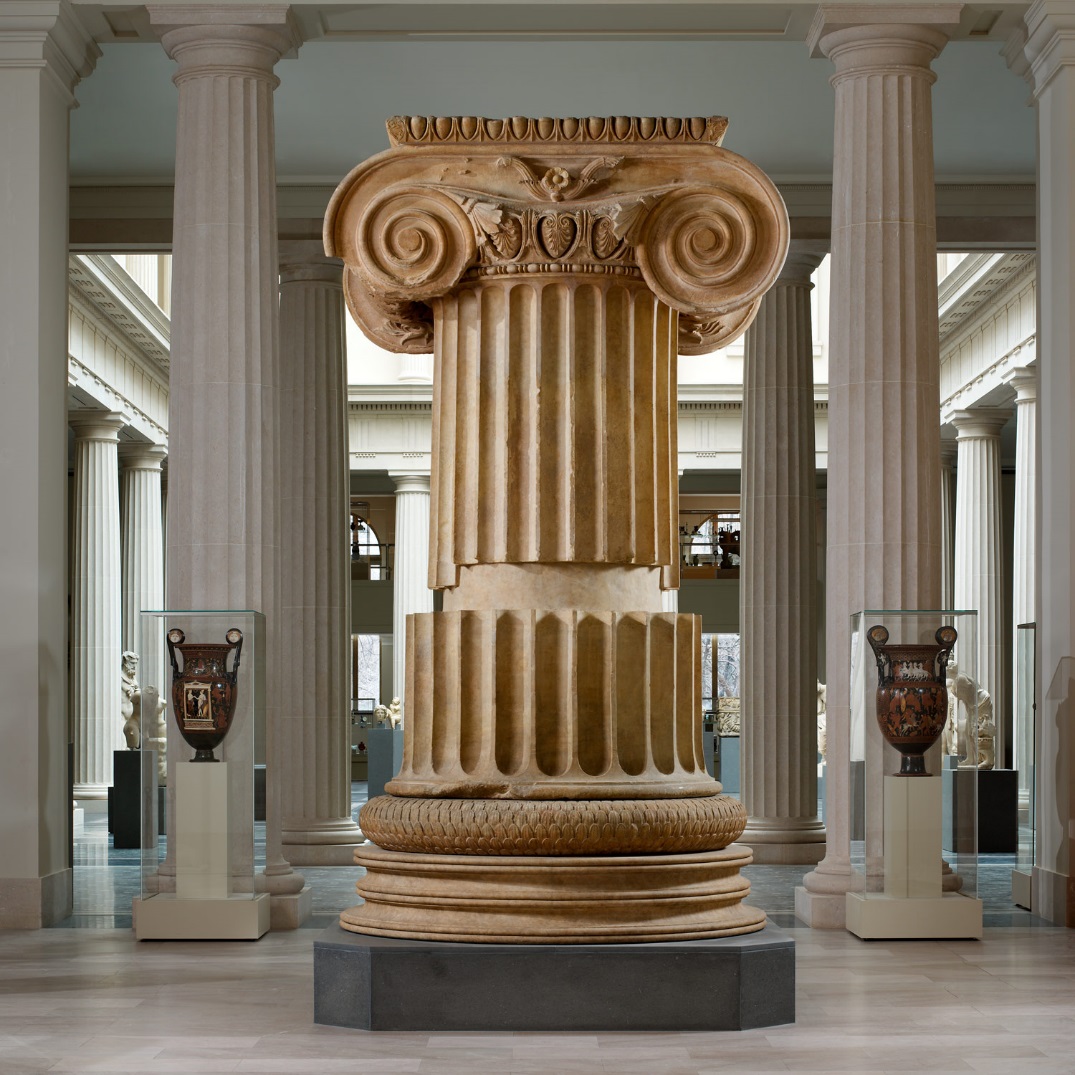Introduction
The Metropolitan Museum features many significant exhibitions. One of the exponents in the Ancient Greece display is the Marble column from the Temple of Artemis at Sardis. It is an excellent illustration of the architecture of the era, which to this day remains an inspiration for many. Figure 1 is the image of the piece.

Marble column from the Temple of Artemis at Sardis and its Origins
Marble column from the Temple of Artemis at Sardis is one of the remains of the architecture of ancient Greece, presented in the exhibition. The piece used to be more than fifty-eight feet in height when it was initially built. It is classified as a stone sculpture, and the material of the column is marble. As the description states, the design of its features “foliate carving on the capital is unique among extant capitals from the temple, and the torus (foliated base), with its vegetal scale-like pattern, is also exceptionally elaborate” (“Marble column from,” n.d., para. 1). It is considered to be an ionic column in style because of how it was constructed.
The column was a part of the Temple of Artemis and was presented to the Metropolitan Museum by The American Society for the Excavation of Sardis in 1926 (“Marble column from,” n.d.). It used to be a part of the interior, as it is “is slightly smaller than others found at the site,” which is an implication that it did not belong to the outside colonnade of the temple (“Marble column from,” n.d., para. 1). The museum features two other columns; each can possibly be a pair for this one. However, it is not known for sure where exactly it stood in the temple. It is stated that the fluted shaft and the base are not original (“Marble column from,” n.d.). The first one is a restored part, and the latter is a copy. This column is a good representation of the ancient Greek architecture as it features the design elements typical for the era. Many other examples that display the architecture of ancient Greece can be viewed today. In particular, the remains of the Temple of Allopo and the Parthenon (Sacks, 2005). Both buildings feature a similar symmetric design of the columns with the one, exhibited in the Metropolitan Museum.
Modern Architecture Inspired by Ancient Greece
The Museum of Modern Literature in Germany is an example of a contemporary building that was constructed using the principles from the ancient Greek culture. David Chipperfield designed it in 2002, and it was built in 2006 (“Museum of Modern,” n.d.). While it looks modern and features a clean look without any specific decorations, the elements used here can be traced back to those in the ancient temples. Most notably, this building features columns and symmetry, which are reminiscent of those pieces displayed in the Metropolitan Museum. The architect utilized the same materials for the inside and the outside, to unify the building. He has successfully merged both the modern and ancients design techniques in this museum.
Overall, the presented column in the Metropolitan Museum is a display of the ancient Greek architecture. The Marble column from the Temple of Artemis at Sardis is a representation of the design and art of that time. The other examples that one can see today are the Temple of Allopo or the Parthenon. Both have the same column style, typical for the era. One of the examples of the influence that ancient Greece had on modern culture is The Museum of Modern Literature. In its structure, both contemporary and antique elements were used for construction.
References
Marble column from the Temple of Artemis at Sardis. (n.d.). Web.
Museum of Modern Literature, Marbach am Neckar. (n.d.). Web.
Sacks, D. (2005). Encyclopedia of the ancient Greek world. New York, NY: Infobase Publishing.